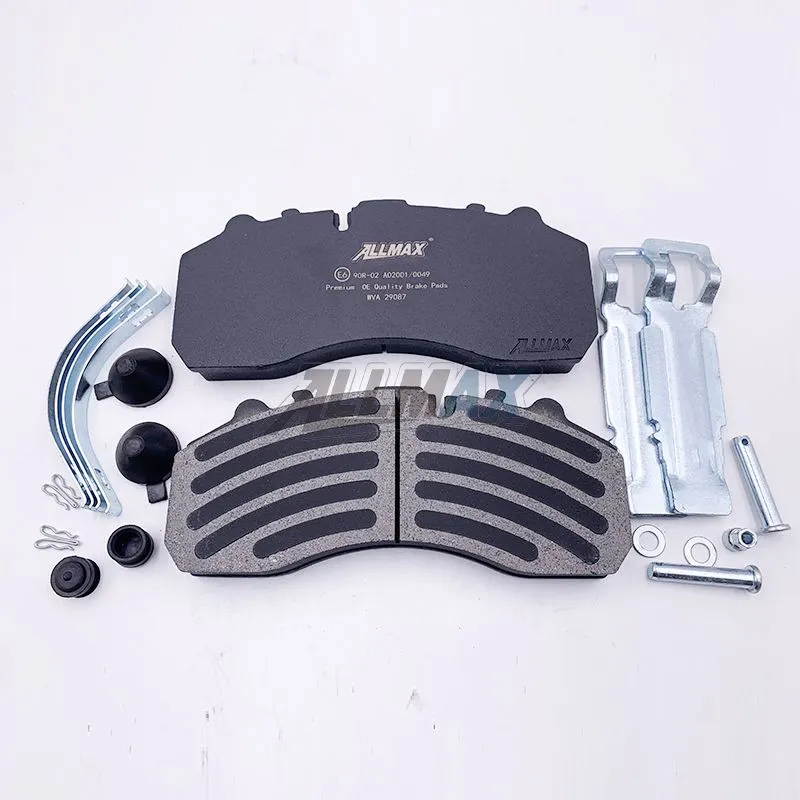Mar. 27, 2024
When it comes to the crucial components of a vehicle's braking system, brake shoes and brake pads play integral roles. While both serve the same purpose of slowing or stopping a vehicle, they do so through different mechanisms and designs.
Brake shoes are typically composed of metal with friction material bonded or riveted to the surface. The friction material is often made of materials like asbestos, ceramic, or organic compounds.
Brake pads, on the other hand, are primarily made of composite materials, including friction materials such as ceramic, metallic, or organic compounds. These materials are designed to withstand high levels of heat and friction generated during braking.

Brake shoes are positioned inside the drum brake system of a vehicle. When the brake pedal is pressed, hydraulic pressure forces the brake shoes outward against the brake drum, creating friction and slowing the rotation of the wheels.
Brake pads are located within the caliper assembly in disc brake systems. When the brake pedal is pressed, hydraulic pressure causes the caliper to squeeze the brake pads against the rotor, generating friction and stopping the vehicle.
The lifespan of brake shoes can be influenced by factors such as driving habits, vehicle weight, road conditions, and the quality of materials used in their construction.
Similarly, the lifespan of brake pads can be affected by driving conditions, vehicle weight, braking habits, and the composition of the brake pad material.
Brake shoes may produce squealing or grinding noises when worn or improperly adjusted. These noises can indicate issues with the brake shoe lining or hardware.
Brake pads can also generate noise, such as squealing or rattling, especially if they become worn or contaminated with debris.
Regular inspection and adjustment of brake shoes are essential for maintaining optimal braking performance. Worn or damaged brake shoes should be promptly replaced to prevent safety hazards.
Similarly, brake pads should be inspected regularly for wear and replaced as needed. Keeping the brake pads clean and free of debris can also prolong their lifespan.
Brake shoes are generally less expensive to manufacture and replace compared to brake pads, making them a cost-effective option for some vehicle owners.
Brake pads may have a higher initial cost than brake shoes, but they often offer longer lifespan and better performance, making them a worthwhile investment for many drivers.
The use of certain materials in brake shoes, such as asbestos, has raised environmental concerns due to their toxic nature. However, modern brake shoes are often manufactured using eco-friendly materials to minimize environmental impact.
Brake pads can also contribute to environmental pollution, particularly if they contain metallic or abrasive materials. However, advancements in brake pad technology have led to the development of more eco-friendly options.
Brake shoes are commonly used in older vehicles and heavy-duty applications where drum brake systems are still prevalent.
Brake pads are the preferred choice for modern vehicles equipped with disc brake systems, offering superior performance and efficiency.
Brake shoes are known for their durability and reliability, but they may lack the stopping power and responsiveness of brake pads, especially in high-performance driving scenarios.
OEM Brake pads offer excellent stopping power and performance, particularly in disc brake systems, but they may wear out more quickly than brake shoes and can be more expensive to replace.
Researchers are exploring new materials and manufacturing techniques to improve the performance and longevity of brake shoes while reducing their environmental impact.
Innovations in brake pad technology focus on enhancing heat resistance, reducing noise, and minimizing brake dust emissions to improve overall braking performance and driver comfort.
In conclusion, brake shoes vs brake pads are essential components of a vehicle's braking system, each with its own unique characteristics and advantages. Understanding the differences between them can help drivers make informed decisions when it comes to maintenance and replacement.
Previous: None
Next: None
If you are interested in sending in a Guest Blogger Submission,welcome to write for us!
All Comments ( 0 )